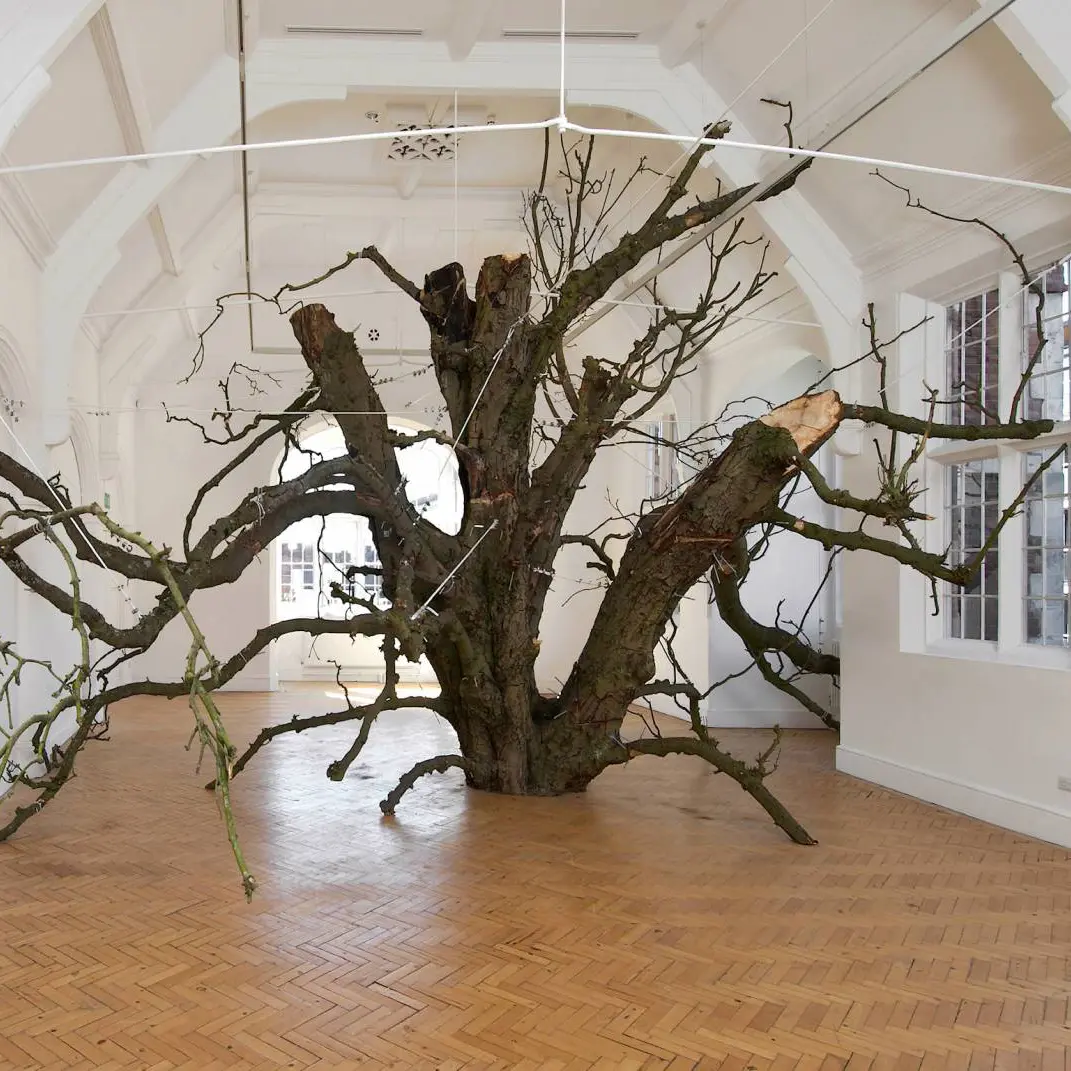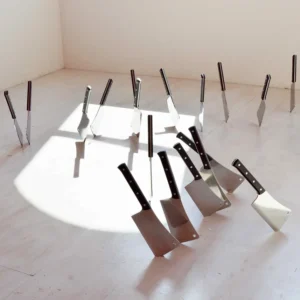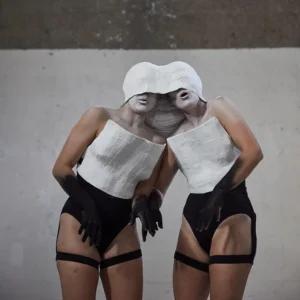Turner Contemporary presents the largest survey exhibition of British artist Anya Gallaccio, featuring iconic sculptures and a new site-specific commission. The exhibition traces Gallaccio’s three-decade inquiry into how art engages with and responds to the natural world.
Given the ephemeral nature of her work, Gallaccio’s art is often documented through photographs and memory. Curated by Melissa Blanchflower, this exhibition aims to present her sculptures and large-scale installations in a way that allows a new generation to engage with themes of environmental sustainability and the preservation of fragile ecosystems.
Similar to delicate elements of the natural world, each artwork in this exhibition possesses its own unique seasonality.
In a striking installation, the crown of a dead ash tree is positioned to touch all four walls of the gallery. After the exhibition, it will return to the forest, where it will serve as a habitat for insects and fungi, eventually decomposing back into the soil.
“La Dolce Vita” first staged in 1994, features candles melting into freeform wax puddles on a large sheet of foil, with the candles being replaced as they melt. By the end of the show, they create a sculptural form with minimal intervention, allowing visitors to see the work’s initial stages before it gains character.
Alongside is “Preserve Beauty,” an early work from a series involving cut flowers. It consists of 1,700 red gerberas displayed between glass panels, resembling abstract paintings. Over time, the flowers will brown and decay, leaving behind dried remnants. Gallaccio chose gerberas as a standardized commercial product.
“Intensities and Surfaces” (1996), where a 32-tonne ice cube melted over three months, eroded by rock salt in an old power station. While this work cannot be replicated here due to practical constraints, the exhibition features “Falling from Grace” (2000), where 2,700 Gala apples are strung together to form a curtain, symbolizing a milder, fragrant decay.
The exhibition culminates in a mechanical finale where a large 3D printer gradually constructs the interior shape of a Kentish “dene hole,” an ancient chalk mine. Each day at noon, the printer extrudes a mixture of porcelain and chalk, layering it to dry before applying the next. The resulting clay is soft and unstable, and Gallaccio explores the contrast between her ambitious design and the material’s limitations.
Anya Gallaccio, known for her innovative use of organic and ephemeral materials like apples, flowers, and chalk, has transformed contemporary sculpture through transformation and impermanence.
Born in 1963 in Paisley, Gallaccio studied at Kingston Polytechnic (graduating in 1985) and Goldsmiths College (1988). She was a Professor in the Department of Visual Arts at the University of California, San Diego, from 2008 to 2024.
Her notable exhibitions include Lindisfarne Castle (2018), The Contemporary Austin (2017), Whitworth Gallery (2016), Museum of Contemporary Art San Diego (2015), Jupiter Artland (2014), Kunstmuseum Bonn (2009), Sculpture Center, New York (2006), and Ikon, Birmingham (2003).
Her works are in public collections such as the Arts Council in London, Museum of Contemporary Art in Sydney, Tate in London, and Seattle Art Museum.





